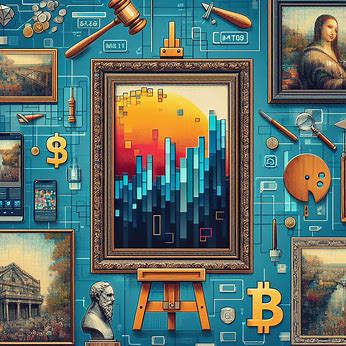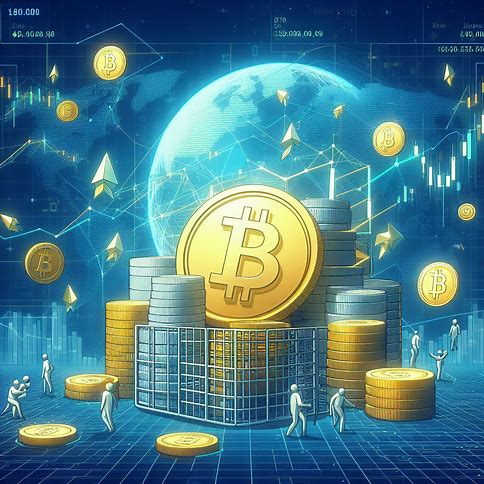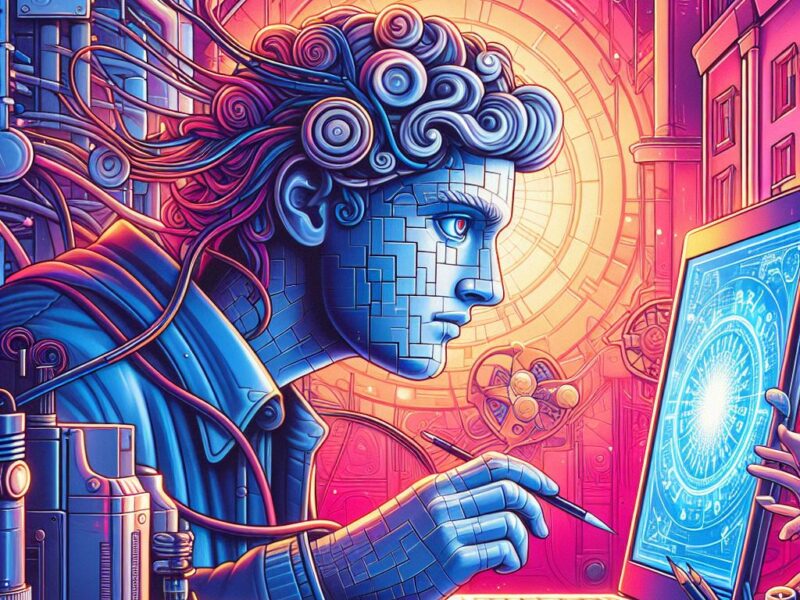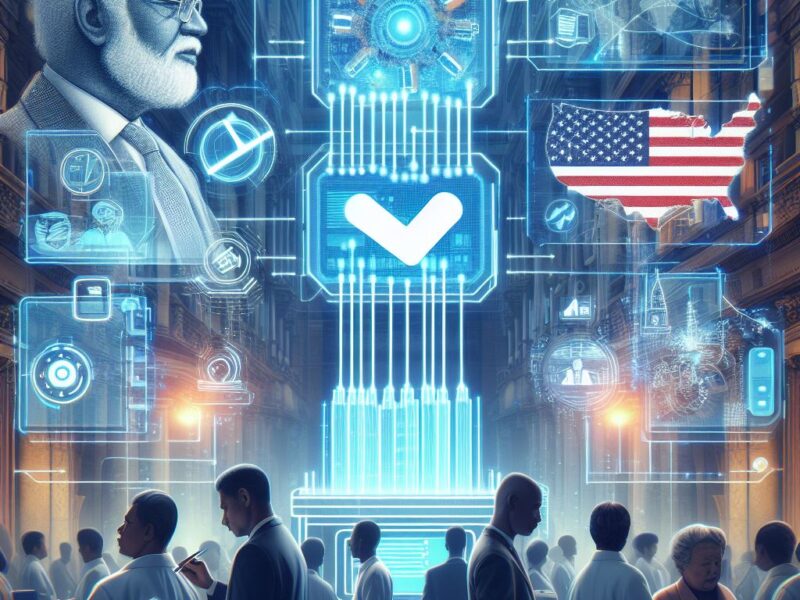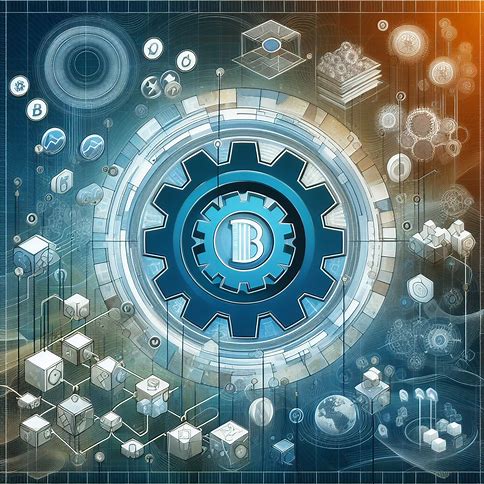You’ve probably heard the speculation about NFTs, or non-fungible tokens, in the art market. But what exactly are these digital assets, and how are they transforming the way we create, buy, and sell art? Here are the impacts of NFTs on the art market.
1. Democratizing Art Ownership
NFTs are making it possible for anyone to own a piece of digital art. By minting artworks as unique tokens on the blockchain, artists can sell directly to collectors without the need for traditional intermediaries like galleries or auction houses. This opens up the market to a wider range of buyers, including younger and tech-savvy collectors who may have previously been priced out of the art world.
The democratization of art ownership through NFTs is a significant shift from the traditional art market, which has often been seen as exclusive and inaccessible to the average person. With NFTs, anyone with an internet connection and a digital wallet can become an art collector, regardless of their background or financial status. This increased accessibility is not only beneficial for buyers but also for artists. NFTs provide a way for artists to reach a global audience and sell their work directly to collectors without having to go through the traditional gatekeepers of the art world. This can be especially valuable for artists who may struggle to get their work seen in galleries or exhibitions.
2. Empowering Artists
With NFTs, artists can retain more control over their work and earn a larger share of the profits. Smart contracts built into NFTs can ensure that artists receive a percentage of every resale, providing ongoing royalties that were previously impossible in the traditional art market. This is a game-changer for many struggling artists who have long been at the mercy of galleries and collectors.
In the traditional art market, artists often receive only a small percentage of the sale price of their work, with the majority going to galleries, dealers, and auction houses. With NFTs, artists can set their own prices and receive the majority of the profits from the initial sale and any subsequent resales. This increased control and financial empowerment are attracting a new generation of artists to the NFT space. Many are experimenting with new mediums and formats that were previously difficult to monetize, such as digital installations, virtual reality experiences, and interactive artworks.
3. Creating Scarcity in the Digital Realm
One of the biggest challenges with digital art has always been the ease of duplication. Unlike physical artworks, which are unique and cannot be perfectly replicated, digital files can be copied and shared endlessly without any loss of quality. This has made it difficult for digital artists to create scarcity and value for their work.
NFTs solve this problem by creating provable scarcity and authenticity. Each NFT is a unique, one-of-a-kind asset that cannot be replicated, giving it value in the eyes of collectors. This scarcity is enforced by the blockchain, which keeps an immutable record of each NFT’s ownership and transaction history.
The ability to create scarcity in the digital realm is a major breakthrough for digital artists. It allows them to create unique, valuable artworks that can be collected and traded like physical artworks. This is leading to a new appreciation for digital art and a growing market for NFT collections.
4. Enabling New Forms of Art
NFTs are inspiring artists to experiment with new mediums and formats that were previously difficult to monetize. From animated GIFs to virtual reality experiences, the possibilities are endless. We’re seeing an explosion of creativity as artists push the boundaries of what’s possible with digital art. One example of this is the rise of generative art, which uses algorithms and computer programs to create unique, one-of-a-kind pieces. Artists like Pak and Mad Dog Jones are using generative techniques to create NFT collections that are highly sought-after by collectors.
Other artists are experimenting with interactive and immersive art experiences that blur the lines between the digital and physical worlds. The metaverse, a term used to describe a shared virtual space, is becoming a new frontier for NFT art, with artists creating virtual galleries, installations, and performances.
5. Attracting New Collectors
The hype around NFTs is drawing in a new generation of art collectors who may have previously been intimidated by the traditional art world. The ability to buy and sell art with the click of a button using cryptocurrency is appealing to many younger and more tech-savvy individuals. NFTs are also attracting collectors from other industries, such as gaming and sports. The crossover between these communities and the art world is leading to new collaborations and partnerships, such as the NBA Top Shot collection of basketball highlight NFTs.
This influx of new collectors is injecting fresh energy and capital into the art market. It’s also leading to a new appreciation for digital art and artists, who have long been undervalued in comparison to their traditional counterparts.
Related: Investing in Bitcoin vs. other Cryptocurrencies
6. Facilitating Fractional Ownership
NFTs are also enabling fractional ownership of art, where multiple people can own a stake in a single piece. This lowers the barrier to entry for collectors and allows for more liquidity in the market. Platforms like Fractional are making it easy to buy, sell, and trade fractions of NFT artwork.
Fractional ownership is a concept that has been used in the traditional art market for years, but it has been limited to high-value pieces that are out of reach for most collectors. With NFTs, fractional ownership can be applied to a much wider range of artworks, making it possible for anyone to own a piece of a valuable collection. This has the potential to democratize art investment and create new opportunities for collectors to diversify their portfolios. It also provides a way for artists to raise funds for their projects by selling fractions of their work to a larger pool of investors.
7. Providing liquidity for artists
In the traditional art market, artists often have to wait years to see a return on their work, if they see one at all. Many struggle to make a living from their art, even as their pieces appreciate in value over time. With NFTs, artists can sell their work instantly and receive payment in cryptocurrency, providing much-needed liquidity.
This instant liquidity is especially beneficial for emerging artists who may struggle to find buyers in the traditional market. With NFTs, they can mint their work and make it available for sale to a global audience without having to wait for a gallery show or exhibition.
NFTs also provide a way for artists to monetize their back catalog of work. Many artists have large bodies of digital work that have never been properly valued or sold. By minting these pieces as NFTs, artists can create new revenue streams and get paid for work that may have been sitting on hard drives for years.
8. Enabling Global Access
NFTs are breaking down geographical barriers and enabling artists to reach a global audience. Anyone with an internet connection can buy or sell NFT art, regardless of their location. This is opening up new opportunities for artists in underrepresented regions and democratizing access to the art market.
In the traditional art world, success often depends on access to galleries, collectors, and institutions that are concentrated in major cities like New York, London, and Hong Kong. This can make it difficult for artists outside of these hubs to get their work seen and sold.
With NFTs, artists can bypass these traditional power structures and reach collectors directly. This is leading to a more decentralized and diverse art market where success is based on the quality of the work rather than access to the right networks.
9. Creating New Revenue Streams
NFTs are also creating new revenue streams for artists and art institutions. Museums and galleries can now monetize their digital collections by minting them as NFTs, while artists can create additional revenue through things like NFT-based memberships and exclusive digital content.
For example, the British Museum recently minted a collection of NFTs based on works by the Japanese artist Hokusai. These NFTs were sold alongside physical prints, creating a new revenue stream for the museum.
Artists are also using NFTs to create new forms of patronage and community engagement. Some are offering exclusive content, such as behind-the-scenes videos or access to private Discord servers, to NFT holders. Others are using NFTs as a way to crowdfund their projects or create decentralized autonomous organizations (DAOs) that give collectors a say in the direction of their work.
10. Driving Innovation in the Art World
Perhaps most importantly, NFTs are driving innovation in the art world and forcing traditional institutions to adapt. We’re seeing new models emerge, like NFT-based art funds and virtual NFT galleries. As more artists and collectors embrace NFTs, it’s clear that this technology is here to stay and will continue to shape the future of art.
However, the rise of NFTs in the art world is not without its challenges and controversies. There are valid concerns about the environmental impact of blockchain technology, which requires significant energy consumption to maintain. There are also questions around the long-term value of NFTs and whether the current market is sustainable. Some critics argue that the NFT market is driven more by speculation than by a genuine appreciation for the art itself. There have been instances of fraud and plagiarism, with some artists having their work minted as NFTs without their consent.
Despite these challenges, it’s clear that NFTs are having a major impact on the art world and opening up new possibilities for artists and collectors alike. As the technology continues to grow and mature, we can expect to see even more innovative uses of NFTs in the art market and beyond.
The rise of NFTs is part of a larger trend towards the digitization and democratization of art. With the internet and social media, artists have more ways than ever to reach audiences and build communities around their work. NFTs are the latest tool in this digital toolbox, providing a way to create scarcity, value, and ownership in the digital realm.
As more people become comfortable with the idea of owning and investing in digital assets, we can expect to see the NFT market continue to grow and evolve. This growth will likely attract more traditional players in the art world, such as galleries, museums, and auction houses, who will need to adapt to stay relevant in this new digital landscape.
At the same time, the rise of NFTs is also likely to spur new innovations and experiments in the art world. We may see new forms of art that are native to the blockchain, such as generative art that comes up over time based on data feeds or interactive experiences that blur the lines between art and gaming.
Key Takeaways
1: Democratizing ownership: NFTs allow anyone to own a piece of digital art, regardless of their location or financial status. This is opening up the art market to a wider audience and creating new opportunities for collectors.
2. Empowering artists: With NFTs, artists can sell their work directly to collectors and retain a larger share of the profits. They can also benefit from ongoing royalties through smart contracts, providing a new level of financial security and independence.
3. Creating digital scarcity: NFTs solve the problem of digital duplication by creating provable scarcity and authenticity. Each NFT is a unique, one-of-a-kind asset that cannot be replicated, giving it value in the eyes of collectors.
4. Enabling new forms of art: NFTs are inspiring artists to experiment with new mediums and formats, such as digital installations, virtual reality experiences, and interactive artworks. This is leading to an explosion of creativity and innovation in the art world.
5. Attracting new collectors: The hype around NFTs is drawing in a new generation of art collectors, including younger and more tech-savvy individuals who may have previously been intimidated by the traditional art world.
6. Providing liquidity for artists: With NFTs, artists can sell their work instantly and receive payment in cryptocurrency, providing much-needed liquidity and financial stability.
7. Enabling global access: NFTs are breaking down geographical barriers and enabling artists to reach a global audience, democratizing access to the art market and creating new opportunities for artists in underrepresented regions.
8. Creating new revenue streams: NFTs are creating new revenue streams for artists and art institutions, such as NFT-based memberships, exclusive digital content, and the ability to monetize digital collections.
9. Driving innovation: NFTs are driving innovation in the art world and forcing traditional institutions to adapt to new models and technologies. This is leading to new experiments and collaborations that are pushing the boundaries of what’s possible in the art market.
Frequently Asked Questions
1: What exactly is an NFT?
An NFT, or non-fungible token, is a unique digital asset that represents ownership of a specific item, such as a piece of art, music, or video. NFTs are stored on a blockchain, which is a decentralized, digital ledger that records transactions in a secure and transparent way.
2. How do NFTs differ from other digital assets?
The key difference between NFTs and other digital assets is that NFTs are non-fungible, meaning each one is unique and cannot be exchanged for another identical item. This is in contrast to fungible assets, like bitcoins or dollar bills, which are interchangeable and have the same value.
3. How are NFTs changing the art market?
NFTs are transforming the art market in several key ways, including:
- Democratizing ownership by allowing anyone to buy and own digital art
- Empowering artists to sell their work directly to collectors and retain more of the profits
- Creating scarcity and authenticity for digital artworks
- Enabling new forms of art and creativity
- Attracting new collectors and driving innovation in the art world
4. What are the benefits of buying art as an NFT?
Some of the benefits of buying art as an NFT include:
- Owning a unique, one-of-a-kind asset that cannot be replicated
- Supporting artists directly and helping them earn a living from their work
- Participating in a new and exciting market that is shaping the future of art
- Potentially benefiting from the appreciation of the artwork over time.
5. What are the risks of buying art as an NFT?
As with any new technology or market, there are risks to buying art as an NFT, including:
- The potential for speculation and price volatility
- There is a risk of fraud or plagiarism, with some artists having their work minted as NFTs without their consent.
- The environmental impact of blockchain technology, which requires significant energy consumption
- The lack of regulation and standards in the NFT market
6. How can I buy NFT artwork?
To buy NFT artwork, you’ll need to:
- Set up a digital wallet that supports NFTs, such as MetaMask or Coinbase Wallet.
- Buy some cryptocurrency, such as Ethereum, which is commonly used to purchase NFTs.
- Find an NFT marketplace, such as OpenSea, Rarible, or Nifty Gateway.
- Browse the available artworks and select the one you want to buy.
- Place a bid or buy the artwork outright using your cryptocurrency.
